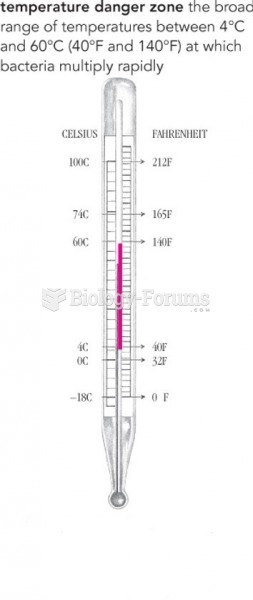|
|
|
Did you know?
Acute bronchitis is an inflammation of the breathing tubes (bronchi), which causes increased mucus production and other changes. It is usually caused by bacteria or viruses, can be serious in people who have pulmonary or cardiac diseases, and can lead to pneumonia.
Did you know?
Alcohol acts as a diuretic. Eight ounces of water is needed to metabolize just 1 ounce of alcohol.
Did you know?
Thyroid conditions may make getting pregnant impossible.
Did you know?
Bacteria have been found alive in a lake buried one half mile under ice in Antarctica.
Did you know?
More than nineteen million Americans carry the factor V gene that causes blood clots, pulmonary embolism, and heart disease.
 Physiological effects of the accumulation of lactose in the intestines of a lactose-intolerant indiv
Physiological effects of the accumulation of lactose in the intestines of a lactose-intolerant indiv
 Having a time zone map located near the telephone will assist you when making long distance calls ou
Having a time zone map located near the telephone will assist you when making long distance calls ou





